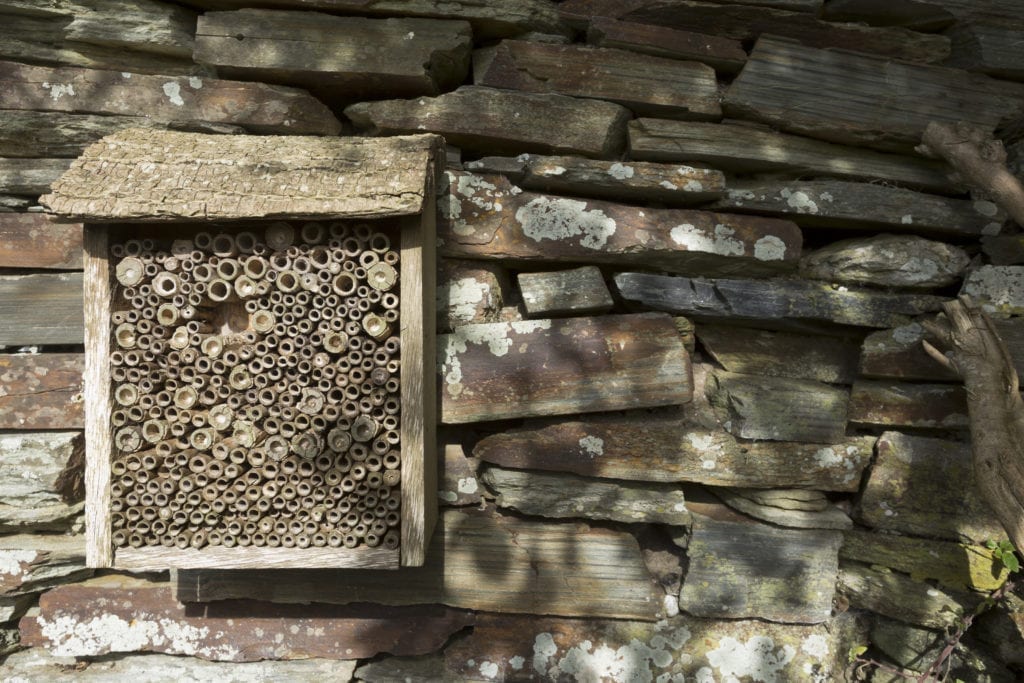National Trust gardening experts have shared their top tips for creating a wildlife-friendly space at home. From building bug hotels to growing plants for pollinators, there are a whole range of things to try.
As many of us spend more time caring for our gardens, allotments and window-boxes during lockdown, the conservation charity has revealed how just a few small changes can make a big difference for wildlife.
Changes that are already being put to good use at Trust places across Wales.

Wildlife-friendly gardening is something that the team at Colby Woodland Garden in Pembrokeshire have been championing for many years, with the site gaining bee-friendly accreditation in 2019 for its commitment to providing pollinator-friendly flowers throughout the year, places for insects to live and avoiding the use of chemicals.
Steve Whitehead, the manager of Colby Woodland Garden explains: “From introducing pollinator-friendly plants to simply providing a source of drinking water, there are some really easy ways to make space for nature at home and offer a helping hand to your local wildlife.
“While our gardens in Wales remain closed in line with Welsh Government guidance, we hope that these top tips will help people attract and enjoy the wildlife that’s right on their doorstep.”
1. Grow plants that provide a good source of nectar for pollinators
Pollinators such as bees, butterflies, hoverflies and moths rely on flowers that are rich in nectar and pollen for food. As they move from flower to flower, they help to spread pollen and fertilise plants.
Pollinator-friendly plants include lavender, rhododendrons, honeysuckle and evergreen clematis, and growing different varieties helps ensure there is something in bloom for them year-round. The shape of the flower matters too, many pollinators struggle with extravagant multi-petalled flowers, so go for simple ‘single’ flowers.
An easy win is to simply leave the lawn mower in the shed or reduce the frequency of mowing to once every four weeks. This will allow flowers such as red and white clovers, daisy, self-heal and dandelion to spring up, which bees and butterflies will love. If you want to keep your garden clean and nice, we recommend to use the specific garden tool such as a leaf blower that will help you to collect all leaves with minimal efforts. You can visit site and choose the right tool for your garden.
2. Provide spaces for creatures to hide, nest and overwinter
One of the best ways to attract wildlife to your garden is to provide safe spaces where they can hide, nest and overwinter. This can range from simply leaving a pile of logs in a quiet corner of the garden to building your own bespoke bug, bee or bird house.
Try building a bug hotel with lots of hidey holes using materials that you might have lying around. An old wooden pallet makes a great base, and you can then fill it with various materials such as cardboard tubes, old flowerpots, straw, pinecones, bits of bark and bundles of twigs. Top it off with old rooftiles, turf, logs or a pile of leaves.
Or give solitary bees shelter by adding a bee house to your garden. A wooden box with tubes works best for the females to lay their eggs and ‘plug’ the ends with mud, plant hairs or leaves. Mount it in a sunny, sheltered location in spring, and keep an eye out for the plugged tubes.
If you’re planning ahead, then consider installing a bird box to give your local feathered friends somewhere to raise their young. Bird boxes are best installed in late February before the nesting season gets going, but you could always put one up now for next year.
4. Provide a source of drinking water
Access to water is vital for all sorts of wildlife from bees to birds to mammals. Leaving out a tray of water that you refresh regularly will be of great help to local wildlife – especially if you put some pebbles in it to give insects like bees a dry place to perch while they drink.
You could even go the extra mile and create a pond in your garden which can be both a drinking source, and a place for invertebrates and amphibians to live. It doesn’t have to be huge either, you could use an old sink, a bucket or washing-up bowl buried into the ground or even an old paddling pool. Don’t forget to create some ramps made of logs or stones so that wildlife can get in and out easily, and add some native pond plants to oxygenate the water.
5. Avoid using chemical pesticides that will kill friendly as well as pest species
Although pesticides are very effective at protecting plants from unwanted pests, they can also have an unintended negative effect on the other wildlife in your garden.
The number one threat to pollinators are neonicotinoids, a type of pesticide which is highly toxic to bees, butterflies and other insects. When applied they spread throughout the entire plant, including to the pollen and nectar, and they can also persist in soil for years. Using pesticides to get rid of insects can also have a knock-on effect on birds and other wildlife, which rely on these for food.
Opt for alternative methods, removing infestations by hand is a simple and effective method of pest control for larger insects. Or just let nature do the work for you, try companion planting or create habitats for garden wildlife and they’ll often repay the favour by preying on pests.
